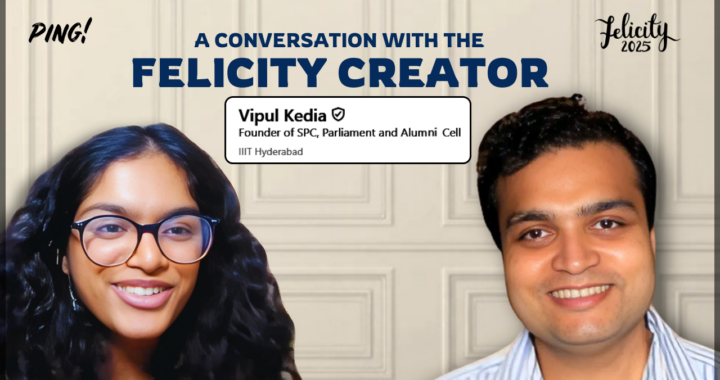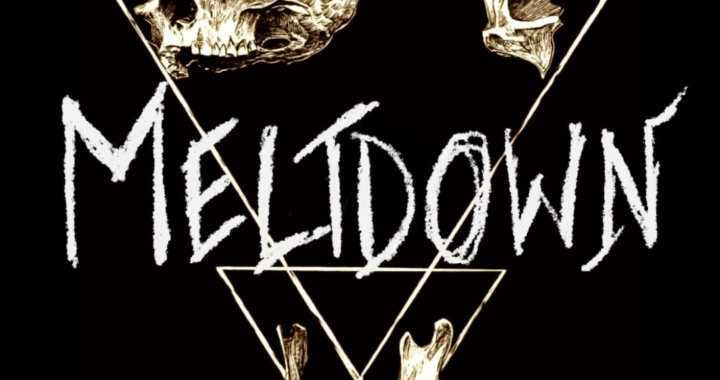The Diversity Pool: What, Why, and ??

In the first week of February 2020, IIIT-H announced its new Diversity Pool for BTech admissions through JEE. It will be applicable from the 2020 admissions cycle itself. The move has invited mixed opinions from the student body, with some students raising valid concerns regarding the policy. There has been an air of confusion about the exact details, and the thought process behind the initiative. Ping! decided to seek answers to the frequently asked questions, hoping to bring forward fresh insights to the IIIT community.
The following were interviewed:
- The Diversity Committee, annotated ‘DivCom’, is represented by Dr Dipti Misra Sharma, Dr Nazia Akhtar, Dr Bapi Raju and Ms Meenakshi Viswanathan. The committee is responsible for implementing the Diversity Pool admissions this year.
- The Student Parliament, annotated ‘Sunil’, represented by Sunil Anumolu, Speaker of Students Parliament.
The paragraphs attributed to either of the parties are not exact quotes from the interview but a gist of the points discussed.
1. What factors motivated the introduction of the diversity pool? From the perspective of both, contributing to a social cause and how it helps the IIIT community.
DivCom: As you know, IIIT has a dismal gender ratio. Diversity isn’t just about gender, but that’s our focus in 2020. We started working on this inherently complex problem a few years back. This year we decided that as a first step, we will take more girls through JEE for the BTech program. In professional STEM courses, as one goes up the ladder, the number of women gets funnelled. This has nothing to do with aptitude, but with specific gender-related social reasons. We decided to contribute to something that is in our control: improving gender diversity in engineering.
IIIT has always prided itself on not just creating good engineers but people who can solve real-world problems. Half of the world consists of women. Without their perspective, we are impoverishing the solutions that we deliver to the world
2. How exactly are diversity pool selections made? How is this different from conventional reservation policies that have been adopted?
Sunil: There are 120 seats for JEE mains currently. Up to 25% or 40 more seats will be added for the diversity pool. Female students will first fill the diversity pool seats. If there are more than 25% girls that meet the general cutoff, then these girls will be eligible for the remaining 120 seats. The latter is unlikely in the next few years considering recent trends.
DivCom: It isn’t about ‘how many’ extra seats are introduced but that 25% of the incoming JEE cohort should consist of girls. The two key differences that make it fundamentally different from the existing reservation policies followed by other colleges are:
- The seats aren’t separately allocated for girls. Just the right number of additional seats will be available for girls to ensure the 25% mark is met.
- The cutoff rank for IIIT, that is top one percentile, is the same for girls and the open category.
This cutoff may entail a slightly lower than 25% intake of girls. This will be necessary to maintain a certain academic threshold. Note that the 25% ratio will be divided among the CSE and ECE programmes proportionally.
3. Will seats be reduced from other modes of admission? If not, the batch size will go from 250 to nearly 350 within a span of 2 years. There is no single room that can accommodate the whole batch. This is important during induction, orientations, talks etc. The student-faculty ratio will worsen a lot. This also has a direct impact on Honors, and on Project faculty availability. What is the institute doing to account for this?
DivCom: IIIT does, in fact, increase the number of seats regularly. Before each increase, the capacity of hostels and classrooms is kept in mind. There are sections (groups) for large classes now. A few years back, this was not the case. The girls’ hostel has enough capacity to meet the increased occupancy. We’ve already tried live streaming induction activities to different rooms in the past. This is the best option for now. In subsequent years, IIIT can look into improving classroom sizes.
Sunil: No seats will be reduced from other modes. The parliament and the institute’s administration is acutely aware of these problems. There are long term plans to tackle the issue, including setting up of new buildings and increasing the number of faculty. At present, efforts are being made to ensure that logistics are managed efficiently for the increased number of students.
4. What arrangements are being made to accommodate the female students? Are the problems with facilities at Parijat being fixed?
DivCom: There is enough capacity in the hostel to accommodate an increased number of students. Any facility-related problems at the girls’ hostel be fixed irrespective of the number of girls residing there. The warden of the girls’ hostel, who is also a part of our committee, is working on these problems.
Sunil: The parliament has always tried its best to work on the issues brought to our notice. A significant problem has been the lack of participation from both girls and boys in the open-for-students meets that are held. The faculty is taking time out to hear everyone’s suggestions and concerns. It is much more effective if girls themselves raise their concerns, rather than a male-dominated parliament. This by itself does show that we need more girls in our student body.
5. A major concern seems to be the lack of perspectives of women in research. Why is there no diversity pool for the research-oriented streams? Why is gender diversity introduction limited to JEE? Will it be kept in mind for UGEE Interviews? Last year only 12/90 (13.33%) UGEE admits were women. Shouldn’t UGEE, being a holistic process, also consider stigmas that girls battle?.
DivCom: This is the first step towards gender diversity. For 2020, the focus is on Gender through JEE. Right now, there will be no change in other modes. We will be really happy if our publicity for JEE gets more girl applicants in UGEE as well, but that is not what we are focusing on. Moreover, the percentage of girls coming in through JEE has been alarmingly low. Last year out of 120 JEE students, only 4 were girls. The acceptance rate does not differ that much because the applicant gender ratio is bad too.
When we are interviewing students for UGEE, many of these things are already kept in mind. Here, we are looking at a lot more details than just JEE preparation. Will we consider gender-based issues during UGEE interviews consciously and proactively as an institutional policy? It is not yet decided, and it’s not for this year.
6. Why was a separate exam, like UGEE, not considered for girls? Will it be considered in the future?
DivCom: No, this wasn’t really considered, and we don’t think it is a good idea. Girls don’t come to IIIT not because they don’t have the capability but because of prevalent social reasons. We don’t want to create a different exam because they are no different from boys.
Sunil: The institute only recently implemented the UGEE exam. The JEE reaches out to 11 Lakh students. Implementing another exam would, in fact, just bring down student quality. This itself is one of the “problems” highlighted by those who oppose the Diversity pool.
7. Why did the Institute decide to set aside 25% of the seats right away? The IITs, for example, have been increasing their seats incrementally from starting at 7% to what is now 20% reservation.
DivCom: A few years back, 10-12% of the incoming class consisted of girls. It was in no way an ideal percentage, and it started reducing further once the IITs started reservation for girls. When we started to think about it, we decided that 25% was a healthy number. For the diversity committee, it is not an easy task to achieve the 25% mark this year itself, but we would like to rise to this challenge.
8. Students feel the diversity pool will create a divide between students based on admission from the very first year. Isn’t this concerning? What will be done to handle this?
DivCom: Such concerns have been raised in the past when the institute introduced the DASA, Lateral Entry, SPEC, CLD/CND/CHD* and UGEE channels. From what we understand, students from these channels have gelled well with their peers. No friction has been noticed. From past precedent, the institute believes that this will not be an issue. Moreover, in some sense, girl students already face a divide, because of their low numbers on campus. The diversity pool, in fact, fixes that problem.
*Note: Earlier, UGEE was conducted independently for CND, CLD and CHD.
Sunil: Students who do hold such a mentality need to be sensitized about the disadvantage girls face right from the beginning. This is especially true for those entering STEM fields – not just in India, but across the world.
Follow up question: But earlier, the different modes meant that the students had very different qualifications. They passed a distinct set of evaluations before coming to IIIT. The Diversity Pool takes students from the same exam, but with lower ranks. This is what raises fresh concerns.
DivCom: We have considered this in our deliberations over the past 3 years. The way we have decided to mitigate this ‘divide’ is by increasing the female applicant pool. Since we are sticking to a threshold cut-off, a couple of marks doesn’t make a big difference in merit. We also looked at the JEE ranks of students from other admission modes. Considering that many who weren’t in the top one percentile in JEE have performed well at IIIT, the threshold is quite competitive. We hope the IIIT student population understands this.
9. Will the students coming from the diversity pool be able to ‘cope’ with relative grading in comparison to students who performed better in JEE? If they get lower grades, Do we run the risk of further reinforcing the bias that males are better at STEM?
DivCom: We discussed this extensively, as the student coming in should also be able to cope with IIIT’s academic rigour. There is a cutoff threshold not just because IIIT fears that otherwise there might be a need to lower the rigour, but for the student’s own well-being.
Sunil: Statistics show that students from modes of admission other than the JEE have done equally well, if not better in certain cases. While rank 3,000 and rank 10,000 may sound significantly different, it is only a matter of a few marks, maybe 4-5 questions on the day of the exam. Such small differences in JEE ranks do not reflect a student’s capability, nor their performance in future years.
10. Many students think that keeping away 25% of the seats is not the right way to fix these problems. Instead, they think problems should be fixed at the grass-root levels. Were other forms of action considered? Why was the current form of the diversity pool chosen?
DivCom: Right now, the methods implemented are to help increase the female applicant pool and translate offers to acceptances.
One of the possibilities discussed was taking female toppers from different board exams. One notices that girls perform better, or at least as well as boys, in these, across several boards. However, we know that different boards have varying standards, making normalization difficult. Rather than discussing more methods straight away, we were trying to understand the problem better.
To introduce diversity, our first channel was SPEC. We tried to reach out to a different demographic, particularly the economically disadvantaged and students from rural areas. The Government of India had introduced UDAAN as a scheme to help girls who could not go to JEE coaching. Therefore, we targeted UDAAN and RGUKT.
Last time around, female applicants and their parents were called and motivated to join IIIT. It was asked whether they were joining and if not, then why? This data continues to inform us. We got to know that there is less visibility among girl students about IIIT. Many girls’ parents also prefer proximity to their hometown.
Sunil: The parliament was initially against the method of implementation chosen. We raised these concerns with the faculty. However, no better, practical form of action could be devised. The administration has been working on this problem and is open to suggestions. At present, this is the best way of increasing the number of female students through JEE that IIIT could come up with. The gender ratio is a problem that needs to be tackled immediately. The chosen method is the most efficient in the short-term.
IIIT is considering smaller initiatives to reach out to girls from high school itself. As it is not run on public funding, IIIT does not have the bandwidth to solve deep, widespread societal problems at the grass-root levels even though we would want to.
11. Why are we not starting an open, national initiative for people from economically weaker backgrounds? Even people from economically weaker backgrounds face disadvantages from the very beginning like girls. Institutes like the IITs have done it already. What motivated the opening of the diversity pool to female students before the economically disadvantaged?
DivCom: We are taking definite, incremental steps towards increasing diversity. It started with SPEC, and now we have this gender-based channel. We will look into it in the future. SPEC was introduced because our student population was majorly from urban cities. Without additional help, rural students couldn’t make it to IIIT because they don’t have access to resources like JEE coaching. Our visibility is also low in rural areas. To answer why girls before the economically backward: the gender ratio is much more skewed right now.
Sunil: IITs can maintain such initiatives because they are government institutions. IIIT does not have the resources to do this effectively yet. This will be considered in the future. The institute, since its inception, is driven towards bringing students with different social and educational backgrounds.
12. You talked about the advantages of increasing the pool of female applicants. What steps is IIIT taking towards this?
DivCom: The visibility of the institute needs to be raised. This is not just true for girl students, but rather everyone – not many people know about the unique profile IIIT-H possesses. We are developing communication materials such as posters, brochures, and flyers. These will be sent out to junior institutes, coaching centres and high schools. Before the COVID-19 Pandemic, we had travel-related outreach programs planned. These obviously cannot happen now.
13. What incentives will be offered to female students to join IIIT?
DivCom: It has not been publicised much, but we have a financial aid program. Anyone who needs it can approach us and we support them. This will obviously also apply to the girls. There are also some additional financial incentives being planned for girls from JEE mode. We will be sharing them soon.
One of the reasons parents prefer to send girls to local institutes instead of IIIT is that they think the fees here are high. Some are more inclined to invest in education for boys than girls. We are willing to work with parents if this is what is stopping them from sending girls to our institute. Currently, the plan is to intervene on a case by case basis. During this year’s outreach, we will get this message across.
We are planning to offer campus visits to accepted girls and their parents. There will be incentives, perhaps financial support, to get parents from far off cities to come. Safety and security is a major concern for parents of girls. Many people don’t even understand the benefits of IIIT’s location in this regard. During the campus visit, they can meet faculty and get a feel of the environment.
Another opportunity we have thought about is to connect all applicants with students and alumni to get queries cleared. We are planning to form groups for this, and it is being worked out. This will hopefully help students make an informed decision. In these conversations, we will also try to find out if someone needs some particular kind of help and if we can accommodate it.
14. How have the outreach plans been affected due to the coronavirus pandemic?
DivCom: We had a lot of plans for March and April. All forms of travel-based outreach have been cancelled. This included a new activity called ‘IIIT Comes to Town’. We planned to visit different cities to spread awareness. We were planning a roundtable for high school and coaching heads from across the country. This would’ve helped them gain insight into various aspects of student life, hostels, our academics, and research. Now, we have decided to do this virtually.
We are now planning YouTube live sessions and Facebook live sessions. These will be used to talk about the infrastructure, mechanics of admission, and much more. We plan to do video testimonials of students, faculty, and staff about their experience at IIIT. We hope that IIIT students also discuss what they’re planning to do in the future because young students need role models. The work of students, researchers and scientists at IIIT needs to be more visible to all applicants. Hence, we will be updating our social media handles regularly – at least 2-3 posts will be made every week. They will cover admissions, undergraduate research, placements and anything else that applicants want to know about.
As some people cannot access videos online easily, alternatives such as WhatsApp groups are being considered. We also want to reach out to people in local languages by translating all our advertisements and information.
We have been reworking our original plans over the past few weeks and we will continue to do so.
15. What are the future steps that are being planned with respect to diversity?
DivCom: Right now, this committee is very focused on admissions 2020. Let’s hope we can do better and implement more things later. We are not in a position to comment on whether the institute will raise the percentage from 25 to say, 30 later.
The aim is that the diversity pool shouldn’t be needed in the future. This pool should get redundant and removed if we are successful in outreach. Once the ball starts rolling, more girls will come on their own. A good gender ratio should be maintained naturally if we hit the target. People should get to know about IIIT and its facilities through word of mouth itself. This timeline could be as short as 3 years.
Currently, seeing the present gender-ratio, parents may decide not to send girls to IIIT. Once that improves a bit, the situation will change rapidly, and targeted initiatives won’t be needed.
16. How can one, as a student, contribute to the implementation of the diversity pool?
Sunil: It is important to understand that more the outreach, the lesser will be the supposed ‘dilution in quality’. When prospective students and their families choose institutes, they trust the students’ opinions much more than institute authorities. It is important that misinformation is controlled. The more the number of students that volunteer, the better it is for us. Instead of writing about problems on social media platforms, students should contact the parliament. We will make sure they are brought to the faculty’s notice.
DivCom: We do really rely on students. Students can come forward and take part in these testimonial videos and ramp up the social media campaign. We need students to reach out to their local communities and their schools. There are some students at IIIT from remote areas, which we won’t be able to reach out to without their help.
As part of our communications campaign, we need students to share our material with their juniors and friends. They can take over some Facebook Live sessions where applicants can ask questions. We have some volunteers right now, but we would like more students to come forward. They can contact us at [email protected].
Many fresh ideas have come from students in the past. Many more will come if the word is spread, and we look forward to it.
Writer: Shashwat Goel
Editors: Jaidev Shriram, Zubair Abid
We would like to thank Atreyee Ghosal, Naman Ahuja, Priyank Modi, Rohan Grover, Shelly Jain, Tejasvi Chebrolu for helping with the interview process and framing the questions to be asked.

 Have you tried turning the mess off and on again?
Have you tried turning the mess off and on again?  Vipul Kedia on building Felicity | The story of how it all began…
Vipul Kedia on building Felicity | The story of how it all began…  Qu’ils mangent de la grenouille! (Let Them Eat Frogs!)
Qu’ils mangent de la grenouille! (Let Them Eat Frogs!)  Tale of Two Cheenties
Tale of Two Cheenties  Peace of mind.
Peace of mind.  Mama, Put My GPTs in the Ground
Mama, Put My GPTs in the Ground  Log Kya Kahenge?
Log Kya Kahenge?  Can you hear the music?
Can you hear the music?
The questions are all very relevant and cover the topic from all sides. Thanks for sharing this.